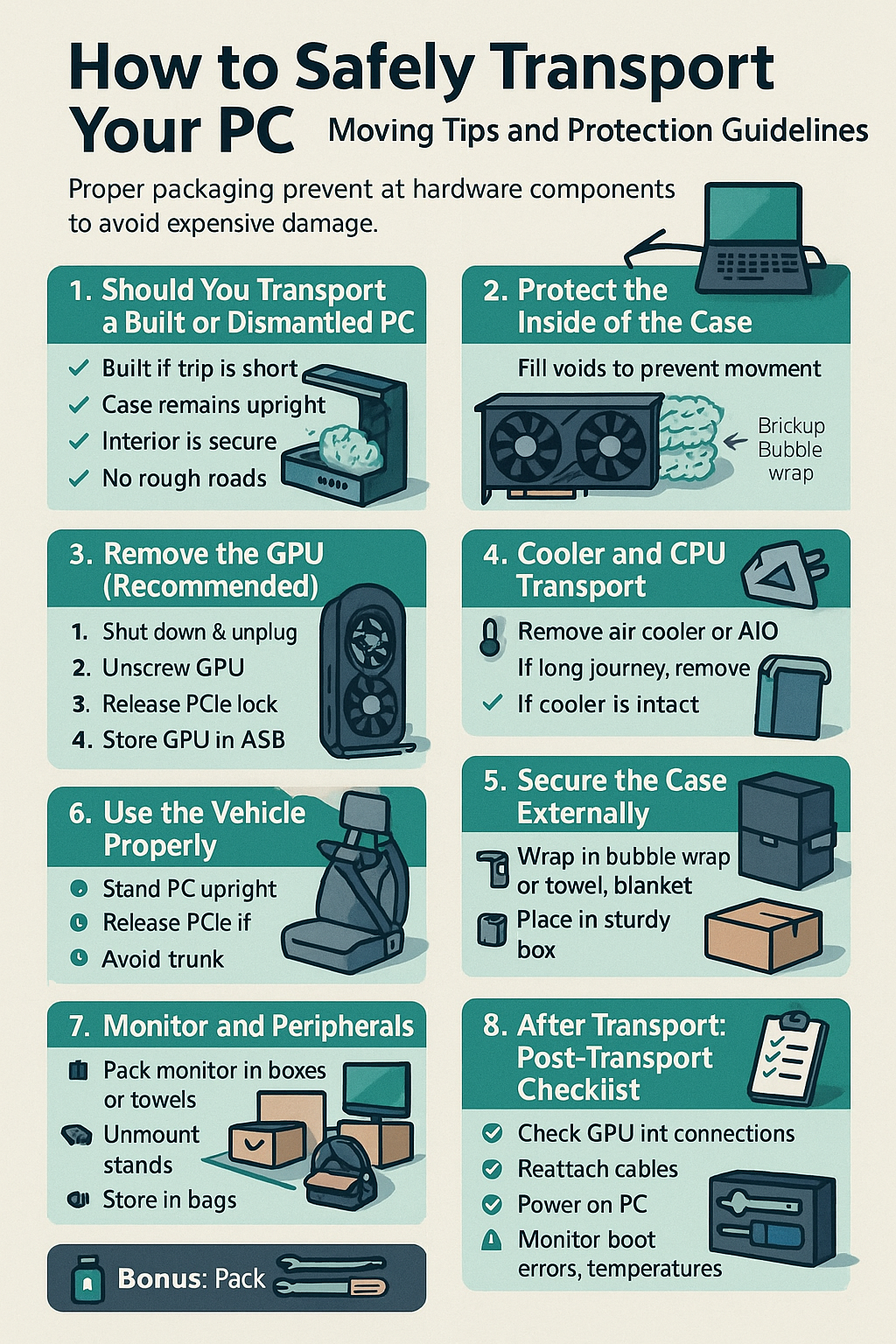Transporting your PC—whether for a move, event, or service—requires care. A single jolt could damage internal components, especially GPUs, CPUs, and storage drives. Here’s how to ensure your PC arrives safely:
Why Careful Transport Matters:
- Prevents internal movement and secure components
- Avoids damage to heavy GPUs and coolers
- Protects sensitive drive mechanisms
- Prevents cosmetic and structural damage
1. When to Transport Assembled vs. Disassembled
- Assembled: Safe for short trips (~<30 km) with upright placement and internal padding
- Disassembled: Recommended for long trips, shipping, or when using large/heavy components
2. Secure Internal Components in the Case
- Use foam, bubble wrap, or crushed packing paper to support GPU and cooler
- Fill any empty cavities to prevent movement
3. Remove the GPU (Recommended)
- Turn off and unplug first
- Unscrew and gently unlock GPU from PCIe slot
- Pack GPU in anti-static bag or original box
4. Detach CPU Cooler if Necessary
- Large air coolers or AIO radiators may stress the motherboard—remove them if shipping
- Note: Reinstallation requires new thermal paste
5. Protect the Exterior
- Wrap case in bubble wrap, blankets, and pack in sturdy cardboard
- Add foam on corners for shock absorption
- Use tape on wrap, not direct on case surfaces
6. Pack Monitor and Peripherals Carefully
- Distribute items in padded compartments
- Don’t stack heavy items on monitors or fragile gear
7. Load the PC Correctly in Vehicles
- Always keep the PC upright
- Seat it on the floor or secure with seatbelt
- Avoid heat exposure and bumpy cargo areas
8. When Using a Shipping Service
- Label as “FRAGILE – DO NOT TURN”
- Mark orientation arrows and descriptions
- Reserve insurance for safe delivery
9. Post-Transport Checklist
- Visually inspect motherboard and GPU
- Reconnect power, video, SATA cables
- Boot and monitor for noise, errors, or overheating
- If needed, reseat components or redo thermal paste
10. Carry a Portable Toolkit
- Include a magnetic screwdriver, spare thermal paste, HDMI cable, extra screws, and zip ties
Final Thoughts:
With careful planning and protective packaging, transporting your PC is worry-free. Whether moving or attending events, follow these best practices to ensure your machine arrives intact and ready to run.
